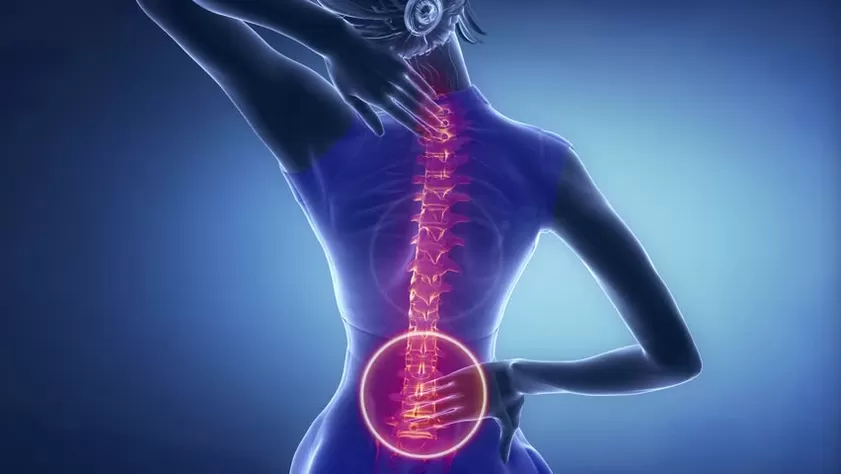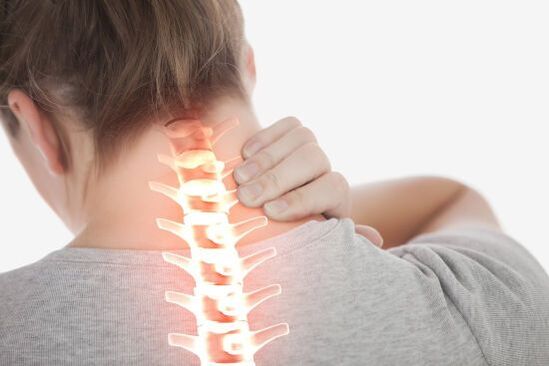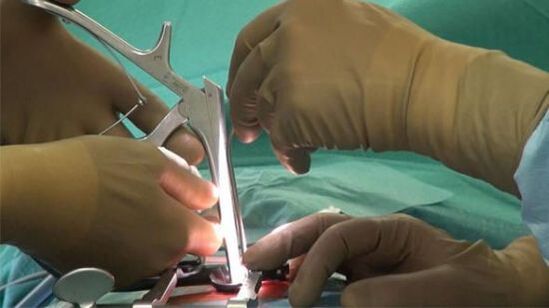
Osteochondrosis is a disease characterized by degenerative changes in the cartilage tissues of the spine. Lack of adequate therapy leads to a violation of the structure and dysfunction of the intervertebral discs, deformation of the spine. Depending on the location of the pathological process, there are the following types of osteochondrosis: cervical, thoracic, lumbar. As statistics show, this disease is observed in more than half of the world population in people over the age of 35. The main reasons for its development are injuries, systematic uneven loads on the spine and legs.
Things
Speaking about what osteochondrosis is, it is necessary to say that this disease causes a violation of the structure of the tissues of the intervertebral discs themselves, reducing their elasticity and changing their shape. At the same time, there is a decrease in the distance between them, which ultimately leads to a loss of stability of the spine.
As a result of the contraction of the intervertebral space, the nerve endings originating from the spinal cord are pinched. This causes increased muscle tone and pain.
A decrease in elasticity causes the formation of intervertebral hernias and the development of protrusion (a disease in which the vertebrae begin to protrude into the spinal canal without rupture of the fibrous ring). And if the treatment is carried out incorrectly or is completely absent, this will lead to the degradation of the joints of the spine and ligaments with the further formation of osteophytes (bone processes).
The development of osteochondrosis provokes a violation of motor functions. The person begins to be bothered by constant pain in the area of the pathological focus, which intensifies during flexion / extension of the back. There is a high probability of subluxation, curvature of the back.
As a rule, the first symptoms of the disease appear in people during the physiological aging period of the body. But there are situations when the pathology begins to develop much earlier. And the reason for this is often the wrong lifestyle.
In medicine, chondrosis also exists and has similar symptoms and etiology. What is the difference between chondrosis and osteochondrosis? Is simple. Chondrosis is the initial stage in the development of osteochondrosis, when the processes of replacing damaged tissues with fibrosis and the formation of osteophytes have not yet begun in the spine. When there is a pronounced deformation of the spine and the formation of new processes, we are talking about osteochondrosis.
Provocative factors
What is chondrosis and osteochondrosis - understood. Now we should talk about the reasons for their development. After all, if you do not get rid of them, then the treatment of the disease will not allow to achieve positive dynamics. As already noted at the beginning, the main reason for the onset of pathology is an uneven load on the spine. It can be caused by:
- carrying heavy bags on one shoulder or in one hand;
- incorrect posture while sitting;
- sleep on a soft mattress, high pillow;
- wearing uncomfortable and anatomically incorrect shoes.
And osteochondrosis of the spine can also develop against the background:
- hypodynamia (accompanied by impaired blood circulation, decreased muscle tone, shortness of breath);
- passive lifestyle;
- obesity;
- injuries (fractures, sprains, bruises);
- flat feet;
- other degenerative diseases that lead to poor circulation in the spine.
Highlighting the causes of osteochondrosis of the spine, it should also be noted:
- frequent physical stress;
- neuro-emotional exhaustion;
- metabolic disorders;
- intoxication (drug, chemical);
- pathology of the digestive system;
- genetic predisposition;
- scoliosis;
- hypovitaminosis;
- pregnancy;
- to smoke;
- drinking alcoholic beverages;
- prolonged / frequent dehydration.
There are many reasons for the development of posterior osteochondrosis. Most often, its appearance occurs immediately against the background of the influence of several factors (for example, trauma, passive lifestyle, smoking, prolonged stay in the wrong posture). It can only be established through a thorough diagnosis, study of the anamnesis.
Stages of development
Before talking about what to do if chondrosis begins to develop, it is also necessary to talk about its stages of development, since not only the severity of the symptoms, but also the tactics of treatment directly depends on them. There are 4 degrees in total:
- First stage. At this stage, pathological processes occur in the nucleus pulposus of the intervertebral disc. In it, dehydration (dehydration) is noted, which ultimately contributes to a decrease in its height and the formation of cracks in the fibrous ring. There is no symptomatic picture at this stage of the disease. A person may experience only slight discomfort in the back area after intense physical exertion, having been in an uncomfortable position for a long time, etc.
- Second phase. It is accompanied by a decrease in the intervertebral space, relaxation of the vertebral muscles and ligaments. Such changes lead to greater mobility of the vertebrae. And any provoking factor can cause them to shift or slide. As for the symptoms, at this stage, patients already have back discomfort and pain that occurs with certain types of loads, pos.
- Third stage. It is characterized by the appearance of prolapses and protrusions, subluxations, arthrosis of the intervertebral joints. At this stage, the disease often causes stiffness of movements, tingling sensation in the pathological area and numbness. The pain syndrome has a pronounced character, it periodically occurs even at rest, in the absence of heavy loads.
- Phase four. At this stage, the body is trying to adapt to the ailments that have arisen. His task is to do everything possible to improve fixation of the spine. To do this, it begins to form osteophytes - bone formations that replace the voids in the spine. However, in this way the body not only helps itself, but also harms. After all, osteophytes lead to pinched nerves, injury to healthy vertebrae. And this becomes the reason for the development of fibrous ankylosis in the joints and intervertebral discs (an increase in the volume of fibrous tissue with its simultaneous fusion with the remnants of cartilage). If a person has microtrauma and violations at the same time, the severity of the pain syndrome increases. In their absence, the clinical picture subsides.
Symptoms
Speaking about what osteochondrosis is and how to get rid of it, one cannot fail to mention the symptoms with which it can manifest itself. The main sign of its development is the presence of discomfort or pain in the neck, thoracic region and lower back. The severity of the sensations directly depends on the degree of development of the disease.
A visual examination of the patient reveals a curvature of the spine in the transverse or longitudinal plane. Most often they are observed in the lower back or neck, less often in the thoracic region.
If we talk about the feelings of the patient himself, then among them there is periodic or constant fatigue in the back area, as well as pain, which can be both consumed and pronounced, depending on the severity of the pathological processes. It can be located in:
- neck,
- shoulder girdle;
- Chest;
- lumbar region;
- perineum.
In this case, stiffness of movements is possible, which makes it difficult to carry out household chores. It occurs most often in the upper limbs. The symptomatic picture can be supplemented by other signs. It all depends on the location of the focus, its severity and the characteristics of the organism. If a patient has disc displacement, protrusion, hernia, osteophytes, this often leads to impaired blood circulation, dysfunction of the spinal canal, edema, fibrosis, pinching. All of this causes symptoms to appear that can complicate the diagnosis and lead to misdiagnosis.
Speaking about how osteochondrosis manifests itself, it is necessary to highlight the most common symptoms that patients complain about. These include:
- pain that occurs in the neck, lower back, shoulder girdle, ribs;
- stiffness of movements, discomfort in the morning after waking up, when bending over, turning over;
- feeling of numbness in the arms, legs, neck;
- discomfort in the joints and muscles of the back;
- frequent dizziness, migraines;
- fast fatigue;
- heartache;
- violation of the sensitivity of the upper limbs;
- decreased muscle tone.
Signs of osteochondrosis directly depend on the location of the pathological focus:
- Cervical Department. In this case, the pain is localized in the neck, arms, shoulder girdle. It can give to the shoulder blades and shoulders. Cervical osteochondrosis can also manifest itself as headache, tinnitus, "goosebumps" in front of the eyes and dizziness.
- Thoracic section. With this pathology, pain occurs in the chest. It can give to the upper shoulder, armpits. It often causes discomfort and pain in the heart region. It can cause malfunctions of the respiratory system, shortness of breath.
- Lumbosacral region. Pain syndrome predominates in the lumbar spine. It also manifests as discomfort in the legs, hips and pelvic organs. It often causes sexual dysfunction.

Any discomfort in the spine is a serious reason to see a doctor.
The presence of such signs as back fatigue, pain can also indicate not only the onset of the disease in question, but also the addition of other diseases that have nothing to do with dystrophic changes in the intervertebral discs. Diagnosis of osteochondrosis or chondrosis can only be made by an experienced doctor after a thorough diagnosis.
Diagnostics
What causes osteochondrosis and how it can manifest itself, we talked about. But I must say that it will not work to make the correct diagnosis based on a visual examination and the patient's feelings alone. To do this, you need to undergo a thorough examination, which necessarily includes:
- X-ray of the cervical, thoracic or lumbar spine (depending on the area of discomfort);
- myelography;
- neurological examination of sensitivity, reflexes.
Since additional diagnostic methods are used:
- TC;
- magnetic resonance;
- NMR.
To exclude the presence of inflammatory or infectious diseases, laboratory tests are also prescribed:
- OAM;
- UAC;
- blood chemistry.
If necessary, a consultation of specialists with a narrower profile is appointed.
Methods of treatment
Unlike chondrosis, with osteochondrosis in the ridge region, a chronic process occurs, which cannot be eliminated by conservative methods. But that doesn't mean you don't need to fight it. Lack of adequate therapy can lead to serious consequences: the spine is deformed, fibrous tissue will appear in place of the bone structures, which is unable to perform the necessary functions, the person will become disabled.
Conservative therapy
What to do with osteochondrosis, the doctor will tell you. As a rule, with such a disease, the following methods are used:
- Pharmacological therapy. In this case, drugs are used to eliminate painful sensations, relieve inflammation and restore metabolism. If the patient has severe pain, drug blockades are used, which, in addition to the analgesic effect, help reduce the severity of the muscle-tonic syndrome. There are the following types of blocks used in osteochondrosis: trigger point block, intraosseous, faceted, paravertebral, epidural.
- Physiotherapy activities. They are also used to reduce pain and improve drug effectiveness. Most often, for osteochondrosis, ultrasound therapy, magnetic fields, low-frequency currents, laser beams, etc. are used.
- Physiotherapy and kinesitherapy. All patients, without exception, are prescribed physical therapy. It is carried out under the supervision of specialists. Provides posture correction, increasing muscle tone, relieving nervous tension. Systematic fulfillment of special exercises also helps to increase the spaces between the discs, to distribute the load evenly on the musculoskeletal system.
- Massage. Manual massage helps normalize blood circulation, relieve muscle spasms and clamps. If the patient has nervous system disorders, hydromassage is prescribed.
- Manual therapy. It is selected individually for each patient. Provides the normalization of lymphatic outflow, blood circulation, metabolism, mobility of the spine. Prevents the development of complications, strengthens the immune system.
- Spinal traction. This method involves stretching the spine using special equipment. Thus, it is possible to achieve an increase in the intervertebral space and reduce the manifestation of osteochondrosis.
Operative treatment
If conservative treatment does not help to eliminate the signs of osteochondrosis and does not give any positive dynamics, they resort to surgical intervention. The indications in this regard are:
- cauda equina syndrome, which develops in the presence of a massive hernia;
- stenosis of the spinal canal with compression of the brain and neurovascular bundles;
- combination of osteochondrosis with significant spondylolisthesis with severe segment instability;
- compression of the root at the level of the lumbar segment L5;
- cervical osteochondrosis, which occurs with discogenic syndrome of the vertebral arteries.

Treatment of surgical osteochondrosis can be carried out in several ways:
- laminotomy. This type of surgery involves the removal of a fragment of the bone structure and the yellow ligament.
- Laminectomy. During this, most of the spine that limits the spinal canal is removed.
- Foraminotamia. The purpose of the operation is to expand the root canal.
- Disctomy. In this operation, partial or complete removal of the intervertebral disc is performed.
- Laser vaporization of the disk core. It is carried out with the participation of a special LED, which ensures partial destruction of the disc, which leads to the reverse development of the hernia.
How to get rid of osteochondrosis, only the doctor decides. It is necessary to understand that each case is individual, and the choice of one or another method of surgical intervention depends on the location of the pathology, its severity, the patient has other diseases.
Traditional methods
At home, you can treat a spinal disease. But this should be done only in cases where there are still symptoms of chondrosis (the initial stages of the development of the disease) and after a preliminary consultation with a doctor.
Speaking of what helps with chondrosis, the following recipes of alternative medicine should be highlighted:
- You need to take 1 kg of coarse salt, mix it with 3 tbsp. L. dry mustard, add 100 ml of water, mix everything well. The resulting gruel should be put on low heat and heated to a temperature of 50 degrees. The mixture is applied to the painful area, a film is placed on top, then a warm handkerchief. With such a compress, the patient must lie down until he has completely cooled down. After the procedure, you need to stay warm for another 2 hours.
- Pour 1. 5 liters of water into a saucepan, add 3 handfuls of sawdust and bring the resulting mixture to a boil, then strain. The sawdust is spread on a plastic wrap, previously covered with a sheet on the bed. A gauze napkin is placed on top of the sawdust, after which they lie down on it and cover it with a warm blanket on top. Then, lie down for 30-40 minutes.
- Take 200 g of Potentilla roots, 100 Potentilla roots, 100 g of elecampane. The herbs are placed in a 3-liter jar, filled to the brim with vodka. The resulting composition is placed in a dark place for 3 weeks and then filtered. Take 3 times a day before meals, 1 tbsp. L. throughout the month. Then take a 10 day break and repeat the course.
It is difficult to treat osteochondrosis. It is difficult to respond to conservative methods of therapy. But if you combine them with proper nutrition, home treatment, physical therapy and all the recommendations of the doctor, then the patient has every chance to get rid of the pains that torment him and prevent the development of complications.


















































